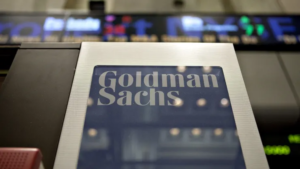Wall Street’s Slide: Examining the Factors Behind the Market Turbulence
Tuesday witnessed a sharp decline on Wall Street, with investors focusing on the downside of a robust job market. The S&P 500 plunged 1.4%, marking its lowest point in four months, while the Dow Jones Industrial Average suffered a 1.3% drop, wiping out its year-to-date gains. Big Tech stocks were among the hardest hit, propelling the Nasdaq composite to a substantial loss of 1.9%.

Rising Bond Yields Add Pressure
Compounding the stock market’s woes, surging Treasury yields in the bond market exerted added pressure. The bond market’s robust performance has been a key driver behind the stock market’s more than 40% loss since late July, despite its earlier-year gains.
Also Read: Stock Market Highlights – Key Moves and Analyst Recommendations
The Bond Yield Surge
The 10-year Treasury yield continued its ascent, reaching 4.79% from 4.69% the previous day and a mere 0.50% during the early stages of the pandemic. This surge, marking the highest level since 2007, followed a report revealing a surplus of job openings in the U.S. job market.
The Impact of Rising Bond Yields
Elevated bond yields lure investment capital away from stocks and other assets prone to price volatility, making borrowing more costly for both corporations and households. These factors can impede corporate profitability and hinder economic growth.
The Fed’s Role in Bond Yields
Investors’ growing belief in the Federal Reserve’s commitment to maintaining higher interest rates for an extended period has propelled the rise in bond yields. The Fed has already raised its federal funds rate to its highest level since 2001, with indications that it may keep rates elevated into 2024, which it refers to as a “restrictive” level to curtail economic growth.
A Job Market Conundrum
A recent U.S. job market report, revealing 9.6 million job openings at the end of August, far exceeding expectations, may further influence the Fed’s stance on rates. The high demand for workers may bolster wage increases, potentially fueling inflation concerns.
Good News vs. Bad News
The market’s reaction to this robust job market data illustrates a classic case of “good news is bad news.” Higher interest rates, driven by rising Treasury yields, have sparked concerns among investors about their impact on both the economy and the markets.
Also Read: Americans Student Loan Borrowers Face Resumption of Payments Amidst Mounting Debt Crisis
Tech Giants Bear the Brunt
Amid these uncertainties, high-growth stocks, particularly Big Tech, have been hit hard, as they are viewed as particularly vulnerable to high-interest rates. Amazon, Microsoft, and Nvidia all experienced notable declines.
Multiple Challenges Converge
Beyond rising yields, several other factors are contributing to the market’s unease. The resumption of student loan repayments may curtail consumer spending while surging oil prices pose inflation threats. Moreover, global economies face their own set of challenges.
Market Implications
The Dow’s year-to-date performance has fallen by 0.4%, following an almost 8% surge at the start of August. Meanwhile, the S&P 500, a key benchmark for many investors, has seen its year-to-date gains diminish to 10.2%.
The market’s turbulent performance reflects the interplay of multiple factors, from a strong job market and rising bond yields to potential economic headwinds. As investors navigate these uncertain waters, Wall Street’s outlook remains fluid, and market participants continue to monitor developments closely.




Pingback: Forbes Reveals America's Richest in 2023: Elon Musk Maintains Top Spot Despite Record Loss - UnknownList
Pingback: Challenges Mount as the London Office Market Gets Tougher: What You Need to Know - UnknownList